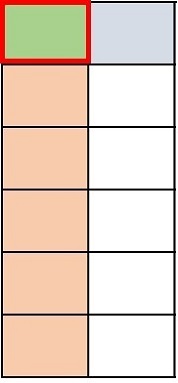
- Multiply and Divide Fractions
- Home
- Product of a Unit Fraction and a Whole Number
- Product of a Fraction and a Whole Number: Problem Type 1
- Introduction to Fraction Multiplication
- Fraction Multiplication
- Product of a Fraction and a Whole Number Problem Type 2
- Determining if a Quantity is Increased or Decreased When Multiplied by a Fraction
- Modeling Multiplication of Proper Fractions
- Multiplication of 3 Fractions
- Word Problem Involving Fractions and Multiplication
- The Reciprocal of a Number
- Division Involving a Whole Number and a Fraction
- Fraction Division
- Fact Families for Multiplication and Division of Fractions
- Modeling Division of a Whole Number by a Fraction
- Word Problem Involving Fractions and Division
Modeling Multiplication of Proper Fractions Online Quiz
Following quiz provides Multiple Choice Questions (MCQs) related to Modeling Multiplication of Proper Fractions. You will have to read all the given answers and click over the correct answer. If you are not sure about the answer then you can check the answer using Show Answer button. You can use Next Quiz button to check new set of questions in the quiz.

Answer : A
Explanation
Step 1:
In this problem, we want to find $\frac{1}{5}$ of $\frac{1}{3}$
Step 2:
First we divide the height of a rectangle into 3 equal parts. We shade one part to represent $\frac{1}{3}$
Step 3:
Next we divide the width into 5 equal parts and shade 1 part to make it $\frac{1}{5}$.
Step 4:
Now we can figure out the product. The part where the shading overlaps represents the numerator. The total number of parts represents the denominator. There are 15 parts in total and 1 of the parts overlaps.
Step 5:
So, the product is $\frac{1}{5}$ $\frac{1}{3}$ = $\frac{1}{15}$
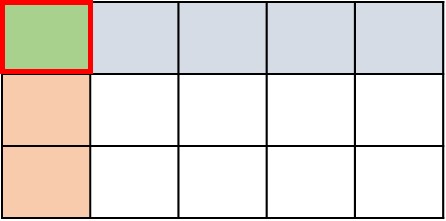
Answer : C
Explanation
Step 1:
In this problem, we want to find $\frac{1}{5}$ of $\frac{1}{4}$
Step 2:
First we divide the height of a rectangle into 4 equal parts. We shade one part to represent $\frac{1}{4}$
Step 3:
Next we divide the width into 5 equal parts and shade 1 part to make it $\frac{1}{5}$.
Step 4:
Now we can figure out the product. The part where the shading overlaps represents the numerator. The total number of parts represents the denominator. There are 20 parts in total and one of the parts overlaps.
Step 5:
So, the product is $\frac{1}{5}$ $\frac{1}{4}$ = $\frac{1}{20}$
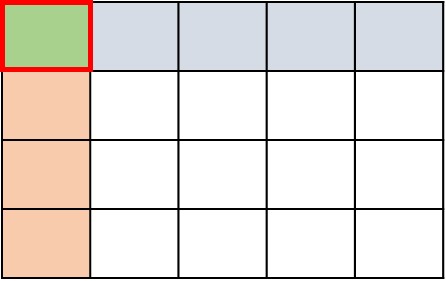
Answer : B
Explanation
Step 1:
In this problem, we want to find $\frac{1}{5}$ of $\frac{1}{6}$
Step 2:
First we divide the height of a rectangle into 6 equal parts. We shade one part to represent $\frac{1}{6}$
Step 3:
Next we divide the width into 5 equal parts and shade 1 part to make it $\frac{1}{5}$.
Step 4:
Now we can figure out the product. The part where the shading overlaps represents the numerator. The total number of parts represents the denominator. There are 30 equal parts in total and one of the parts overlaps.
Step 5:
So, the product is $\frac{1}{5}$ $\frac{1}{6}$ = $\frac{1}{30}$
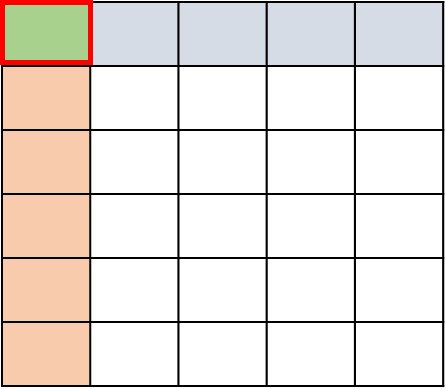
Answer : D
Explanation
Step 1:
In this problem, we want to find $\frac{1}{2}$ of $\frac{1}{4}$
Step 2:
First we divide the height of a rectangle into 4 equal parts. We shade one part to represent $\frac{1}{4}$
Step 3:
Next we divide the width into 2 equal parts and shade 1 part to make it $\frac{1}{2}$.
Step 4:
Now we can figure out the product. The part where the shading overlaps represents the numerator. The total number of parts represents the denominator. There are 8 parts in total and one of the parts overlaps.
Step 5:
So, the product is $\frac{1}{2}$ $\frac{1}{4}$ = $\frac{1}{8}$
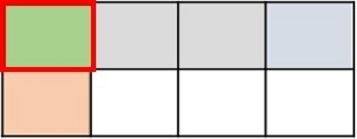
Answer : C
Explanation
Step 1:
In this problem, we want to find $\frac{2}{5}$ of $\frac{1}{2}$
Step 2:
First we divide the height of a rectangle into 2 equal parts. We shade one part to represent $\frac{1}{2}$.
Step 3:
Next we divide the width into 5 equal parts and shade 2 parts to make it $\frac{2}{5}$.
Step 4:
Now we can figure out the product. The part where the shading overlaps represents the numerator. The total number of parts represents the denominator. There are 10 parts in total and two of the parts overlap.
Step 5:
So, the product is $\frac{2}{5}$ $\frac{1}{2}$ = $\frac{2}{10}$

Answer : A
Explanation
Step 1:
In this problem, we want to find $\frac{2}{3}$ of $\frac{1}{2}$
Step 2:
First we divide the height of a rectangle into 2 equal parts. We shade one part to represent $\frac{1}{2}$.
Step 3:
Next we divide the width into 3 equal parts and shade 2 parts to make it $\frac{2}{3}$.
Step 4:
Now we can figure out the product. The part where the shading overlaps represents the numerator. The total number of parts represents the denominator. There are 6 parts in total and two of the parts overlap.
Step 5:
So, the product is $\frac{2}{3}$ $\frac{1}{2}$ = $\frac{2}{6}$
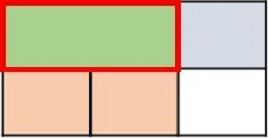
Answer : B
Explanation
Step 1:
In this problem, we want to find $\frac{1}{2}$ of $\frac{1}{2}$
Step 2:
First we divide the height of a rectangle into 2 equal parts. We shade one part to represent $\frac{1}{2}$
Step 3:
Next we divide the width into 2 equal parts and shade 1 part to make it $\frac{1}{2}$.
Step 4:
Now we can figure out the product. The part where the shading overlaps represents the numerator. The total number of parts represents the denominator. There are 4 parts in total and one of the parts overlaps.
Step 5:
So, the product is $\frac{1}{2}$ $\frac{1}{2}$ = $\frac{1}{4}$

Answer : D
Explanation
Step 1:
In this problem, we want to find $\frac{2}{3}$ of $\frac{1}{6}$
Step 2:
First we divide the height of a rectangle into 6 equal parts. We shade one part to represent $\frac{1}{6}$
Step 3:
Next we divide the width into 3 equal parts and shade 2 parts to make it $\frac{2}{3}$.
Step 4:
Now we can figure out the product. The part where the shading overlaps represents the numerator. The total number of parts represents the denominator. There are 18 parts in total and two of the parts overlap.
Step 5:
So, the product is $\frac{2}{3}$ $\frac{1}{6}$ = $\frac{2}{18}$
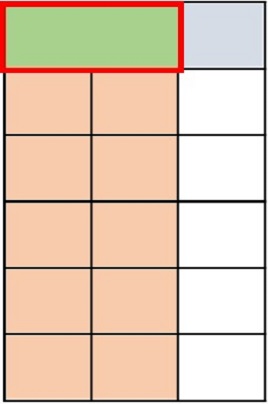
Answer : B
Explanation
Step 1:
In this problem, we want to find $\frac{3}{4}$ of $\frac{1}{2}$
Step 2:
First we divide the height of a rectangle into 2 equal parts. We shade one part to represent $\frac{1}{2}$
Step 3:
Next we divide the width into 4 equal parts and shade 3 parts to make it $\frac{3}{4}$.
Step 4:
Now we can figure out the product. The part where the shading overlaps represents the numerator. The total number of parts represents the denominator. There are 8 parts in total and three of the parts overlap.
Step 5:
So, the product is $\frac{3}{4}$ $\frac{1}{2}$ = $\frac{3}{8}$
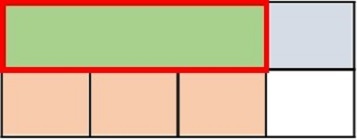
Answer : C
Explanation
Step 1:
In this problem, we want to find $\frac{1}{2}$ of $\frac{1}{6}$
Step 2:
First we divide the height of a rectangle into 6 equal parts. We shade one part to represent $\frac{1}{6}$
Step 3:
Next we divide the width into 2 equal parts and shade 1 part to make it $\frac{1}{2}$.
Step 4:
Now we can figure out the product. The part where the shading overlaps represents the numerator. The total number of parts represents the denominator. There are 12 parts in total and one of the parts overlaps.
Step 5:
So, the product is $\frac{1}{2}$ $\frac{1}{6}$ = $\frac{1}{12}$
